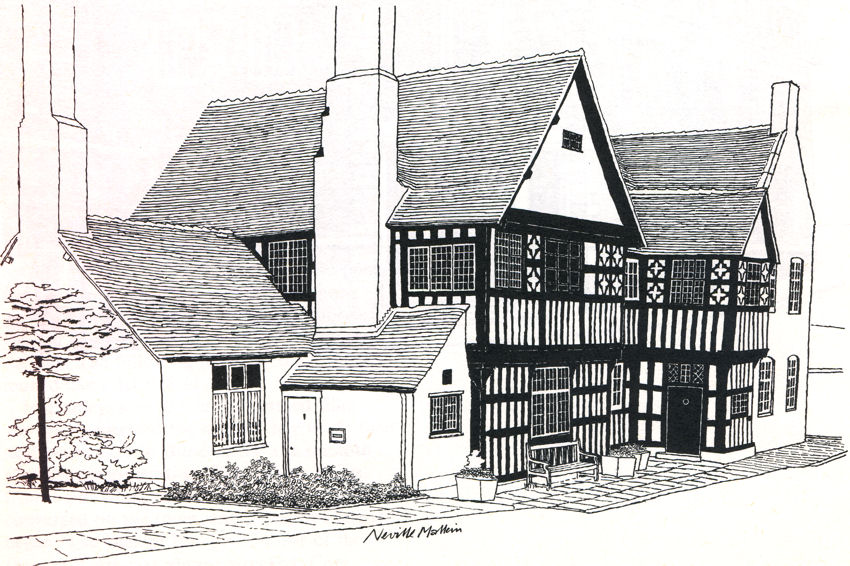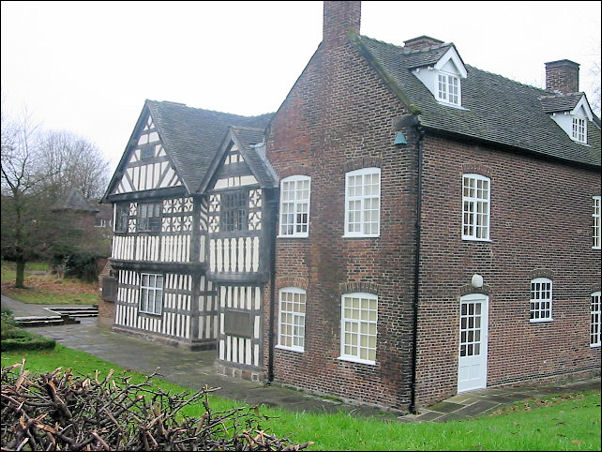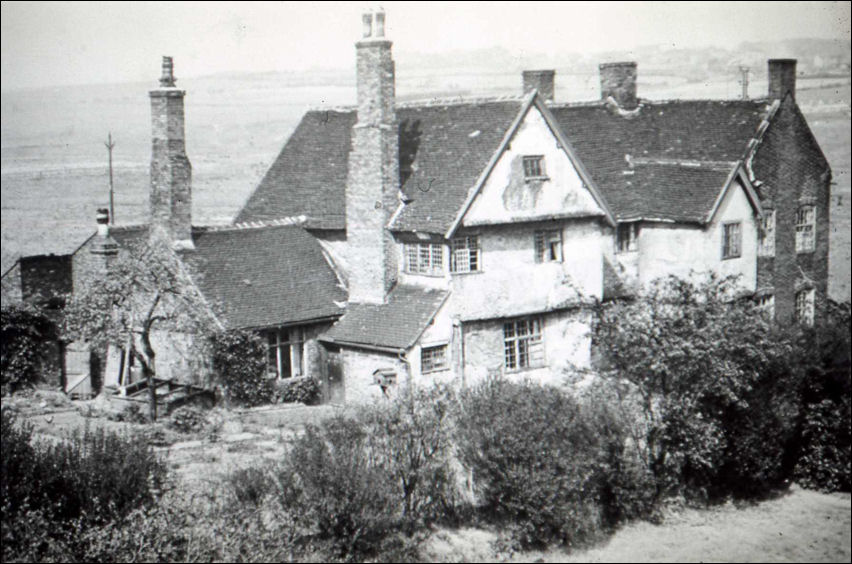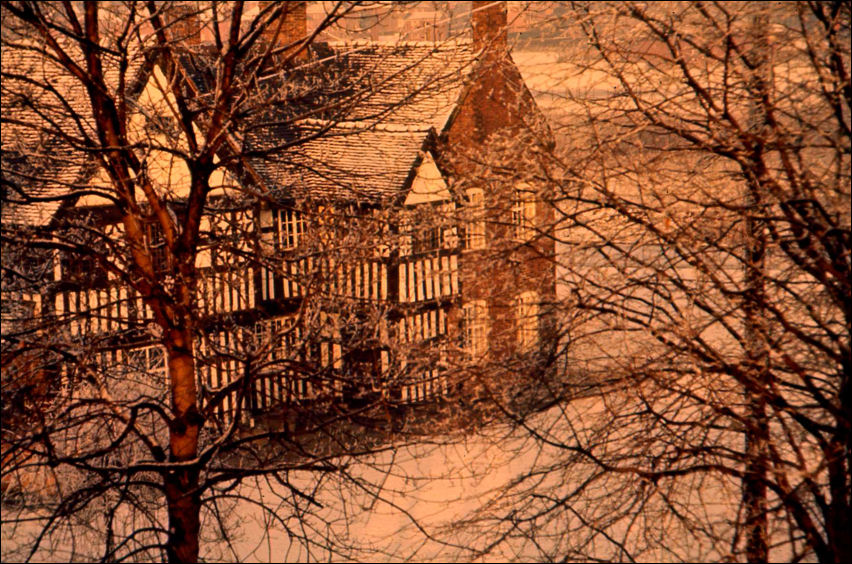|
|
|
![]() back to "The Grand Tour" index
back to "The Grand Tour" index
Neville Malkin's "Grand Tour" of the Potteries
buildings of
Smallthorne
![]()
![]()
![]()
next: Bennett home,
Cobridge
previous: George
Hotel, Burslem
contents: index of buildings of Tunstall and surrounding area
|
No 52 - Ford Green Hall, Smallthorne
photo of the hall c.1946
Ford Green Hall was commissioned by Hugh
Ford, a wealthy yeoman farmer, in 1624.
photo: © The Potteries Museum & Art Gallery |

Ford Green Hall,
Smallthorne
pen drawing by Neville Malkin -
Sept 1974
"A lovely, timber-framed house with a
two-bay Georgian addition.
The timberwork is mostly closely set verticals, but higher up also concave-sided
lozenges.
The gables are plain white now. - Square brick dovecote"..... Pevsner

Ford Green
Hall, Smallthorne, Stoke on Trent
The hall is a 17th century house and period garden open to the
public.
It is furnished with original and reproduction textiles, ceramics and furniture.
photo: Phil Eptlett Dec 2005
|
"What
a wonderful surprise to find a gem of Elizabethan England tucked away
quietly at the bottom of Smallthorne Bank! Known as Ford Green Hall,
this very fine half-timbered manor house, the oldest house in the
city, has survived the centuries of savagery since it was built in
1580. The brick wings were added in 1734, probably as a replacement
for some previous building that had been destroyed by fire. When Stoke-on-Trent brought the Hall in 1946 for £1,100 the interesting exterior timbers were covered with stucco and the building was in a poor state of repair; it had been plagued by floodwaters from the nearby stream. At a cost of £18,000 a culvert was built to prevent further flooding and £9,000 spent on restoring the building to its former glory. The Hall was finally opened as a museum in 1952. This beautiful building contains a wealth of fine and rare period exhibits that reflect the craftsman's skills and domestic necessities of our predecessors. There are joiners' marks carved on the beams. In one of the bedrooms you will find witchcraft signs inlaid in the original panelling, intended to ward off evil spirits. In the headboard of one of the fourposter beds there is a secret safe concealed in the mass of carving, an ingenious place in which to hide valuables. There are original tapestries, original glass in the windows, a Welsh dresser over 300 years old, a scold's bridle for punishing chatty women, cradles, clocks, chains, tables, and a multitude of very well preserved exhibits displayed in this fine late Tudor house......"
|

Ford
Green Hall prior to restoration
photo: Ewart Morris

a restored Ford
Green Hall in the snow
photo: Ewart Morris
![]()
![]()
![]()
next: Bennett home,
Cobridge
previous: George
Hotel, Burslem
contents: index of buildings of Tunstall and surrounding area
back to "The Grand Tour" index